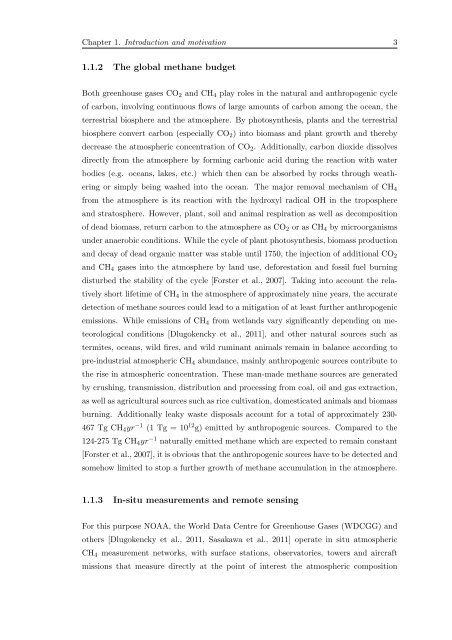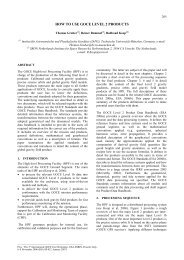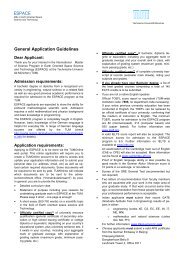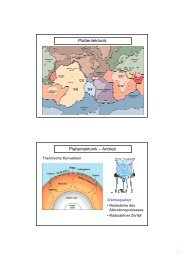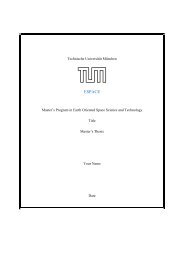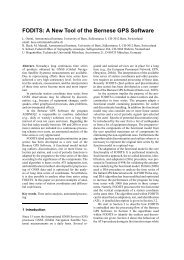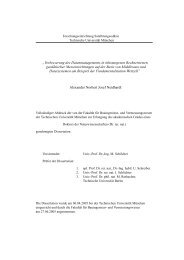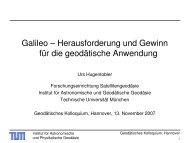Cloud Statistics from Calipso Lidar Data for the ... - espace-tum.de
Cloud Statistics from Calipso Lidar Data for the ... - espace-tum.de
Cloud Statistics from Calipso Lidar Data for the ... - espace-tum.de
Create successful ePaper yourself
Turn your PDF publications into a flip-book with our unique Google optimized e-Paper software.
Chapter 1. Introduction and motivation 3<br />
1.1.2 The global methane budget<br />
Both greenhouse gases CO 2 and CH 4 play roles in <strong>the</strong> natural and anthropogenic cycle<br />
of carbon, involving continuous flows of large amounts of carbon among <strong>the</strong> ocean, <strong>the</strong><br />
terrestrial biosphere and <strong>the</strong> atmosphere. By photosyn<strong>the</strong>sis, plants and <strong>the</strong> terrestrial<br />
biosphere convert carbon (especially CO 2 ) into biomass and plant growth and <strong>the</strong>reby<br />
<strong>de</strong>crease <strong>the</strong> atmospheric concentration of CO 2 . Additionally, carbon dioxi<strong>de</strong> dissolves<br />
directly <strong>from</strong> <strong>the</strong> atmosphere by <strong>for</strong>ming carbonic acid during <strong>the</strong> reaction with water<br />
bodies (e.g. oceans, lakes, etc.) which <strong>the</strong>n can be absorbed by rocks through wea<strong>the</strong>ring<br />
or simply being washed into <strong>the</strong> ocean. The major removal mechanism of CH 4<br />
<strong>from</strong> <strong>the</strong> atmosphere is its reaction with <strong>the</strong> hydroxyl radical OH in <strong>the</strong> troposphere<br />
and stratosphere. However, plant, soil and animal respiration as well as <strong>de</strong>composition<br />
of <strong>de</strong>ad biomass, return carbon to <strong>the</strong> atmosphere as CO 2 or as CH 4 by microorganisms<br />
un<strong>de</strong>r anaerobic conditions. While <strong>the</strong> cycle of plant photosyn<strong>the</strong>sis, biomass production<br />
and <strong>de</strong>cay of <strong>de</strong>ad organic matter was stable until 1750, <strong>the</strong> injection of additional CO 2<br />
and CH 4 gases into <strong>the</strong> atmosphere by land use, <strong>de</strong><strong>for</strong>estation and fossil fuel burning<br />
disturbed <strong>the</strong> stability of <strong>the</strong> cycle [Forster et al., 2007]. Taking into account <strong>the</strong> relatively<br />
short lifetime of CH 4 in <strong>the</strong> atmosphere of approximately nine years, <strong>the</strong> accurate<br />
<strong>de</strong>tection of methane sources could lead to a mitigation of at least fur<strong>the</strong>r anthropogenic<br />
emissions. While emissions of CH 4 <strong>from</strong> wetlands vary significantly <strong>de</strong>pending on meteorological<br />
conditions [Dlugokencky et al., 2011], and o<strong>the</strong>r natural sources such as<br />
termites, oceans, wild fires, and wild ruminant animals remain in balance according to<br />
pre-industrial atmospheric CH 4 abundance, mainly anthropogenic sources contribute to<br />
<strong>the</strong> rise in atmospheric concentration. These man-ma<strong>de</strong> methane sources are generated<br />
by crushing, transmission, distribution and processing <strong>from</strong> coal, oil and gas extraction,<br />
as well as agricultural sources such as rice cultivation, domesticated animals and biomass<br />
burning. Additionally leaky waste disposals account <strong>for</strong> a total of approximately 230-<br />
467 Tg CH 4 yr −1 (1 Tg = 10 12 g) emitted by anthropogenic sources. Compared to <strong>the</strong><br />
124-275 Tg CH 4 yr −1 naturally emitted methane which are expected to remain constant<br />
[Forster et al., 2007], it is obvious that <strong>the</strong> anthropogenic sources have to be <strong>de</strong>tected and<br />
somehow limited to stop a fur<strong>the</strong>r growth of methane accumulation in <strong>the</strong> atmosphere.<br />
1.1.3 In-situ measurements and remote sensing<br />
For this purpose NOAA, <strong>the</strong> World <strong>Data</strong> Centre <strong>for</strong> Greenhouse Gases (WDCGG) and<br />
o<strong>the</strong>rs [Dlugokencky et al., 2011, Sasakawa et al., 2011] operate in situ atmospheric<br />
CH 4 measurement networks, with surface stations, observatories, towers and aircraft<br />
missions that measure directly at <strong>the</strong> point of interest <strong>the</strong> atmospheric composition


